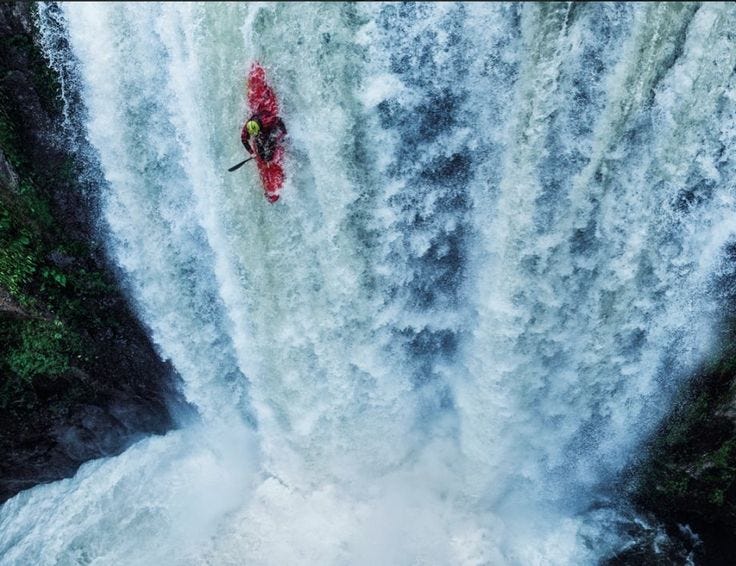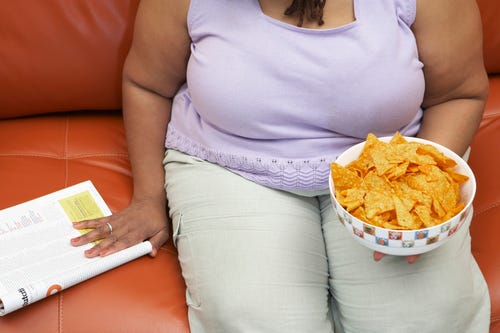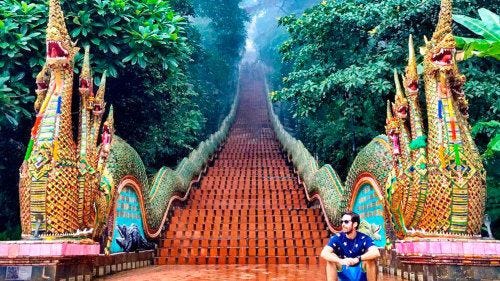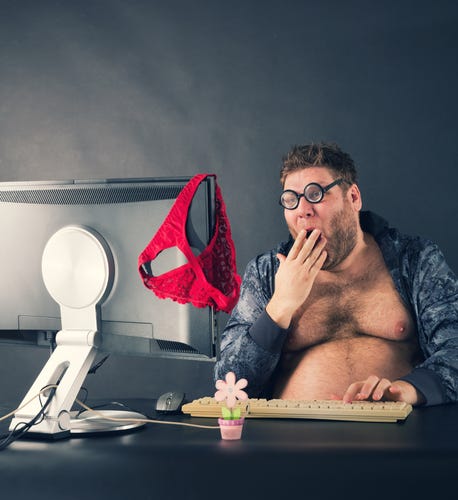
The guy was just in front of me as I was descending the steps at Red Rocks, our outdoor amphitheater here in Colorado. It was a sunny morning, about 8 a.m. and crowded. People ran, walked, crab-walked and otherwise did a variety of boot camp calisthenics, many with dogs in tow.
It’s a popular spot for good reason.
What struck me was how hard it was for him to walk.
He wasn’t disabled. Anything but.
He was grossly over-developed.
His calves and thighs were so big that he had difficulty walking. They rubbed together in a way that made it nearly impossible for him to comfortably walk, much less exercise.
It hurt to watch. In his enthusiasm to “GET HUGE” he had effectively disabled himself.

In the sometimes-extreme effort to develop titanic muscles, impress each other at the gym or win a bodybuilding contest, people often overdevelop their musculature, using steroids along with their hard work to build size. This has led to a whole other “-exia” in the fitness field, called Bigorexia, which afflicts those who simply can’t get big enough. They could outsize the Hulk, but like anorexics, can’t see what they’ve done to their bodies. It’s simply another kind of body dysmorphia. Just like the man at the top of this page, whose over-developed traps (without equal attention to his abs and forearms) has turned him into Quasimodo. Good luck finding a collared shirt for work.
As a bodybuilder myself for 45 years, I see this all the time. What pains me is that those who engage in this kind of twisted attempt to outdo everyone else is that this isn’t fitness. It’s madness.
There are people at my gym who scoff at me because, after 45 years of lifting, I don’t sport massive size. Dear god, thank heaven I don’t. Imagine developing dense, very heavy muscles on my upper body. I get conked by a branch while riding a horse, then I try to lift all that weight back upright. You are coming off, and worse, with all that weight you’re going to land with all the delicacy of a granite boulder. When I look at the overly developed women who make fun of me, the first thing I ask is whether or not they could even begin to keep up in my sports of choice. I kayak, cycle, ride horses, skydive, bungee jump, hike, paraglide, a vast range of sports which require agility. Flexibility. Swift movement, especially if you’re in trouble. At 5'8.5 and about 123 lbs, even at 65, I’m agile, swift, limber. That’s healthy. I like my guns, but you can’t break bricks with them. Besides, and forgive my frankness, who cares?

Trading Fit for Freak
What good does all this hard work do if you cannot use what you’ve built, and if anything, it not only ruins your body, but shortens your life with all the drugs and horrific dieting that’s involved?
I would never take away from the work ethic these people have. However, I question- for damned good reason- what drives them to go so far beyond any semblance of normalcy. What are we proving here?
I met a retired fireman two weeks ago who made a comment that stuck with me. We’re both in our sixties and have been at this game for decades, in part because we’re both veterans. The discipline of exercise and thoughtful diet are simply a way of being.
But here’s the thing. Imagine if all our soldiers were so massively overdeveloped they couldn’t walk, hike or run. Cartoon figures notwithstanding, among the finest athletes in all the military are SEALs. They tend to be smallish, tight, wiry and intensely athletic. Big muscles get in the way. One of my closest friends is married to a SEAL- he’s short, tight, slim, and a ridiculously fit man.
This is called functional fitness.
The military knows exactly what it’s doing. The services can’t afford folks who can’t use their muscles. Whether you fit into a tank, a sub, or a high-performance aircraft, you have to be functionally fit to get the job done.
The idea is that if you can’t use those muscles in life, if they don’t serve you, then this begs the question: why overdevelop them?
While I understand the attraction of having the biggest biceps on the block, why do it if taking steroids costs you one or both of your testicles, to say nothing of your long-term health? Turns you into a murderer? This is the sickness of either starving ourselves to look like the freak show which is the modeling community or bulking ourselves up to look like cartoon characters.
Here’s a good example of what cost 31-year old Austrian bodybuilding Andreas Münzer phenom his life in 1996, after he was inspired by Arnold Schwarzenegger: after months of stomach pain, he was hospitalized. He died not long afterwards, and here’s what the doctors found: Münzer’s kidneys and liver failed. At this point, Münzer’s condition had degraded so badly that he was unable to receive a blood transfusion. Andreas Münzer died on the morning of March 14th, 1996 at just 31 years of age.
The autopsy report was extremely unsettling. Details included a complete absence of subcutaneous bodyfat, a liver full of tennis ball sized tumors and a crumbling mass of polysterene-like tissue, and a heart almost double the size of a normal heart. His electrolytes were also out of balance and 20 different substances were found in his toxicology report.

Münzer was known for being “ripped,” a highly desirable aspect of elite bodybuilders (see photo left). To get that takes ridding the body of fat and water. Unfortunately, the body needs plenty of both. That’s not healthy. That’s deadly sick.
It’s also very common in bodybuilding circles, a community that loves to claim healthy living as a lifestyle. Nothing could possibly be more from the truth. My ex-, who in his twenties was a champion all-natural bodybuilder, refused to take steroids, but was surrounded by those who did. He saw the damage. He chose health, won championships without them. He even met a few top bodybuilders last year weeks before they succumbed to the very lifestyle habits that made them famous. That’s not functional fitness. That’s fakery of the worst possible sort.

Defining Functional Fitness
Any time we engage in a workout program, the whole point behind it is to get to the point where we can use that strength and endurance in life. In sports. To support healthy aging. To keep us flexible, agile and confident in our physical forms. The Mayo Clinic defines functional fitness training this way:
Functional fitness exercises train your muscles to work together and prepare them for daily tasks by simulating common movements you might do at home, at work or in sports. While using various muscles in the upper and lower body at the same time, functional fitness exercises also emphasize core stability.
As we age, we face multiple challenges ranging from sarcopenia (age-related muscle loss), decreased lung capacity, and reduced flexibility. Each of these is much reduced- although all are inevitable in the end- by regular exercise. The more we extend ourselves the better the results. However any extreme of any kind is going to do damage one way or the other. If we avoid it altogether, we pay a steep price. If we exercise to exhaustion we can damage ourselves.
Neither is functional.
It troubles me that when we walk into a 24-Fitness the signs exhort us to push to the extreme. It troubles me at times when I see programs that deify those who do such extraordinary stunts- which frankly, are impressive- that those of us mere mortals feel like dopes because we can’t even come close. It angers me that there seems to be such a celebration of extremity that those who might otherwise be motivated to even reach an average level of fitness feel defeated before they start.

The Evolution of Physical Fitness
Over the course of history, fitness and its popularity have waxed and waned. Early on, fitness was considered essential for war, with games such as the early Olympics a place were participants could demonstrate their prowess and physical beauty in celebration of Zeus. In the early days of Christianity, the emphasis on readying oneself for the afterlife overrode the importance of fitness in the earthly life. Over time, serfs and servants who worked the land had no need for any additional exercise. As the industrial revolution took hold, so did an interest in a fit form. Early proponents of fitness for everyman (and woman, thanks to Catharine Beecher in 1823) evolved, along with gymnastics and centers devoted to physical beauty and health.
The emphasis had always been on fitness which made us better in life. Not to turn us into freaks and gargoyles for bragging rights, at the extreme cost of high cholesterol, heart failure and early deaths for those who took it too far.
The Greek father of medicine, Hippocrates (whom doctors would do well to revisit, I might add) had these three essential quotes about exercise:
Walking is man’s best medicine.
Everything in excess is opposed to nature.
When we are pounded with images of people doing simply extraordinary things, on one hand we can be deeply impressed. Others try to emulate them with sometimes disastrous outcomes. For example, my best male buddy is the wildlands supervisor down in Southwestern Colorado. He has many a tale about morons who hike their kayaks into extremely remote areas where the early spring rapids are so dangerous they aren’t even rated. Most are barely competent in Class III rapids, much less those that can kill even the best on the rapids. All to get a shot of themselves that looks like something out of Outside Magazine. Often, he reports, they end up with fractured femurs and concussions, at best, and at worst, they drown, battered and smashed by waters they had no business attempting. The cost of hubris and ego.
But it looked so fucking epic, man.

Well, I’m sure your last thoughts were pretty epic, too, buddy.

What Real Fitness Looks Like
While each of us has a unique body type, one way to think about this is what do you want to do with your body? If you’re an Olympian athlete, that’s one thing. If you’re just an everyday Joe or Jane, it’s another. Rather than be defeated by the extremes that fill the airwaves, consider where you are right now and where you would like to be. What sports do you want to do? Or do you simply want more use of your body? Beat back aging with a good regime? Get rid of diseases and the limitations that are the inevitable results of bad habits?
My handyman, Steve, is 65. About 5'9", maybe around 160, he’s slim, flat-bellied and very strong. There’s not much he can’t lift, move around, or accomplish. He’s compact, a vegan, and meditates. He’s been doing handyman work for decades and it shows. He’s full of energy and enthusiasm, can wiggle into tiny spaces, and is extremely flexible due to his yoga practice. Steve is the epitome of functional fitness.

On the other end, I see people everywhere who struggle to get out of their chairs. They need assistance getting in and out of a car.
A few years back I was in Costa Rica, and enjoying a steep hike at a waterfall. I had been joined by a couple at least twenty years younger. After perhaps ten steps the man was huffing and complaining and red-faced. I train on stairs at altitude. AT LEAST 2400 steps a pop, at 6200’. I made the entire climb without even blowing hard. Please, this isn’t about bragging. This is about being able to enjoy what life has to offer. You certainly don’t have to do what I do. But with no effort at all, we can hardly expect our bodies to perform for us when faced with a challenge, whether that’s climbing on the roof to clean the gutters ( a job I’ll be doing this coming weekend) or climbing the stairs to see a gorgeous temple in Thailand. It’s right painful to look at a 300-stair climb, and have to tell your friends to head on up without you. I guarantee you the climb is worth it, the best views and the best monasteries are at the top. When my friend Jill and I did that very thing back in 2011, I noticed far too many tourists who took one look at the stairs and sat down, defeated. I wouldn’t want my lack of fitness to cost me the sights that I spent a fortune to see. Many Americans don’t realize that the rest of the world walks, climbs, hikes, exercises far more than we do, and there isn’t a Disabilities Act to require access. You are on your own. Can’t hike or climb? Have a seat and wait. I can’t speak for anyone else but when I see steps like these I want to run up them. I LOVE steps. That didn’t happen overnight nor am I “just lucky.” It takes work. But that work has paid off so that I can be joyful in my body’s abilities.

The Failed Promise of Technology
When the advent of technology was in its first blush, pundits spoke of our having far more time for leisure activities, which at that time meant being outside playing, doing sports and being physically active. No one could possibly have anticipated that not only would we end up velcro-ed to our desks, but on top of that, so addicted to our devices that we spend up to 14 hours a day doing something the body isn’t designed to do: sit. It rebels with aches, pains, fat where we don’t want it, migraines, bad eyesight, the list goes on forever. The body shrieks in very clear language. Yet we settle into the couch, our butt fat spreading, our spines degenerating, and enjoy our Doritos, Pizza Hut, poppers and every other kind of food that has difficulty moving through a digestive system that gets no work or real nutrition.

After years of abuse, sedentary living and bad food, evil pharmaceuticals and OTC meds, our bodies are rebelling. This isn’t just age. This is a broad combination of lifestyle choices and an unwillingness to ask the body to do what it’s designed to do: move. Rather than watch others play soccer, play soccer. Rather than watch others have fun, have fun. When I run stairs at Red Rocks I’m constantly playing with dogs, meeting interesting people, and above all, enjoying the gorgeous surroundings. It’s as much a social outlet as it is hard work. It’s a very fun outing and along the way I work my body. Every fifty stairs there’s another mutt to play with. Another fireman in bunkers to talk to. In every community, there is a place where you can do this. Community rec centers are terrific places to do Silver Sneakers, meet friends, get motivated and laugh along the way. Start where you are and set reasonable, kind expectations, especially if you’re just beginning a workout program. Pay attention to your body when it says STOP I HURT. There are times to push through this. Not at the beginning of a brand new program.
What’s an easy prescription for functional fitness? Here goes:
- Don’t let extremes intimidate you.
- Find what makes you feel joyful, and get fit for that sport or activity.
- Take your time.
- Be patient.
- Work within your limitations and be willing to back off and rest when the body speaks to you in tongues about going a wee bit too far.
- Forget the freaks. Nobody is happy paying that kind of price to have the biggest biceps on the block.
- Laugh along the way. If it ain’t fun, you will find plenty of reasons to quit. That’s when we start dying young.
Comments powered by Talkyard.